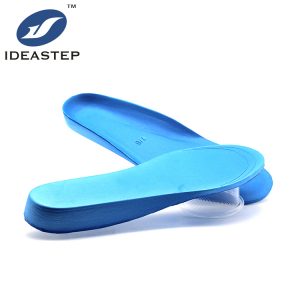
Arch-supported insoles, also known as orthotic insoles, offer various advantages and disadvantages. Let’s explore them:
Advantages:
1. Arch Support: The primary benefit of arch-supported insoles is that they provide additional support to the arches of your feet. This can be particularly helpful for individuals with flat feet or high arches, as it helps distribute weight evenly and reduces excessive strain on the foot’s structures.
2. Pain Relief: Arch-supported insoles can alleviate pain and discomfort caused by conditions like plantar fasciitis, Achilles tendonitis, shin splints, and other foot-related issues. By providing better arch support, they help reduce pressure on sensitive areas, thereby offering relief from pain.
3. Improved Stability: These insoles enhance stability by aligning the foot properly and reducing overpronation (inward rolling of the foot) or supination (outward rolling of the foot). Enhanced stability can improve balance and prevent injuries, especially during physical activities or sports.
4. Shock Absorption: Many arch-supported insoles are designed with cushioning materials such as gel, foam, or specialized inserts. These materials absorb shock and impact forces, protecting the feet, ankles, knees, and lower back from excessive strain, thus reducing the risk of overuse injuries.
Disadvantages:
1. Limited Applicability: Arch-supported insoles may not be suitable for everyone. Individuals with normal or well-supported arches might find these insoles uncomfortable or unnecessary, as they can potentially disrupt the natural biomechanics of their feet.
2. Adjustment Period: Some people may experience an adjustment period when first using arch-supported insoles. It takes time for the feet to adapt to the new support, and initially, discomfort or mild foot soreness may occur. However, this usually subsides as the feet adjust.
3. Shoe Fit Issues: Arch-supported insoles can alter the fit of shoes, especially those with narrow or tight toe boxes. In some cases, you may need to select shoes with a slightly larger size to accommodate the additional bulk of the insoles.
4. Cost: High-quality arch-supported insoles can be relatively expensive compared to regular insoles or shoe inserts. It’s important to consider the cost-benefit ratio and whether the potential advantages outweigh the investment for your specific foot condition.
Remember, it’s always advisable to consult with a healthcare professional or podiatrist who can assess your individual needs and recommend the most appropriate type of insoles or orthotics for your feet.
